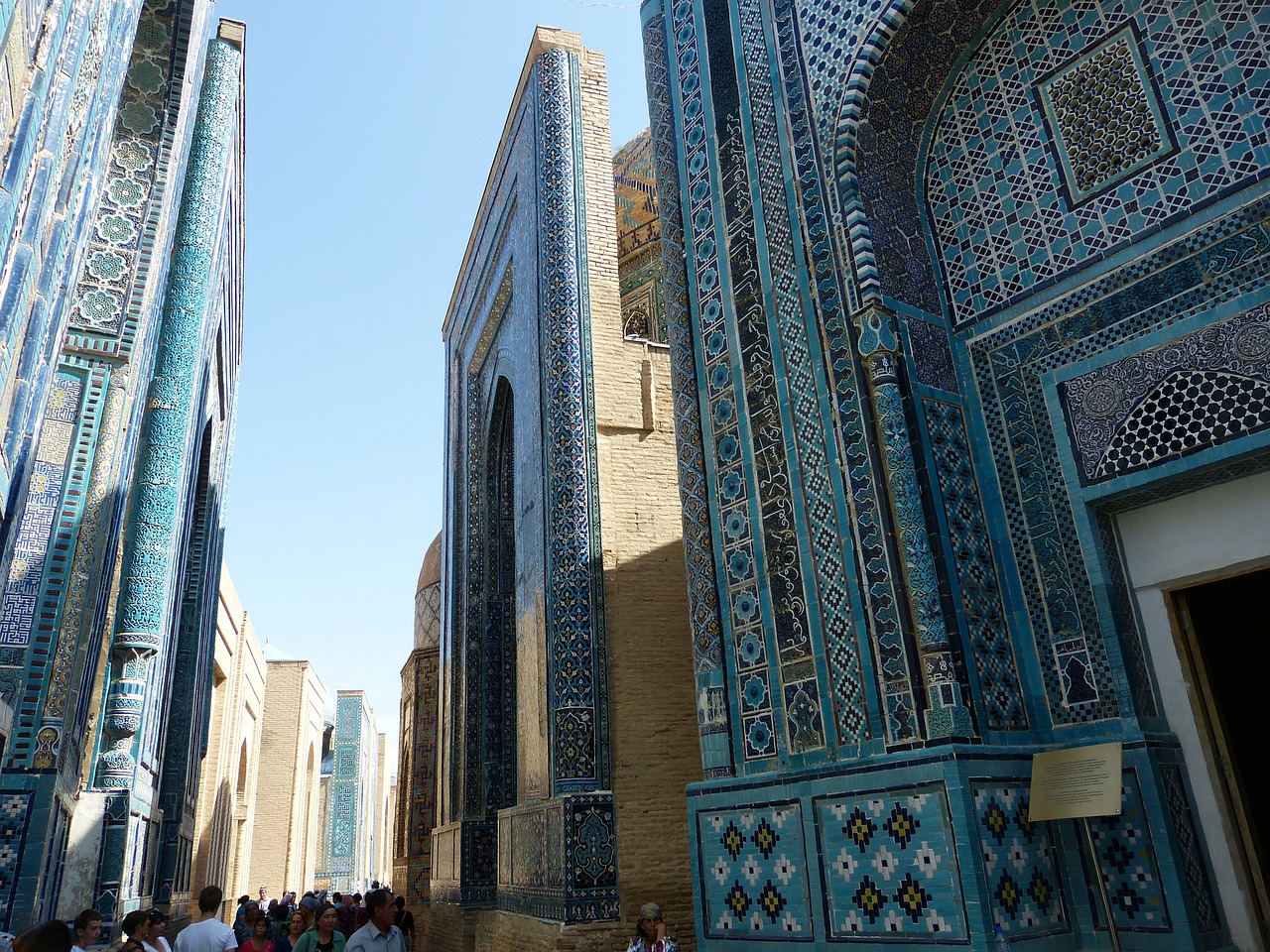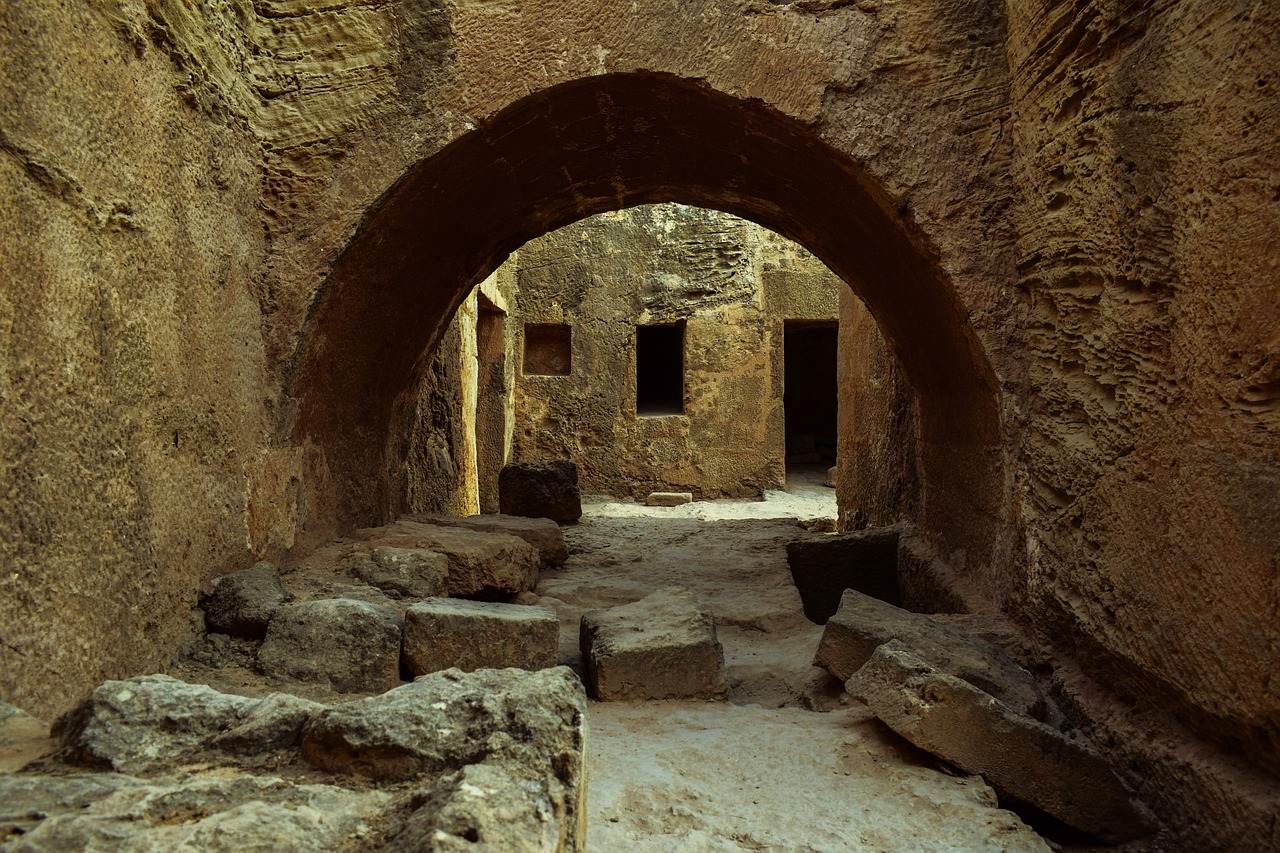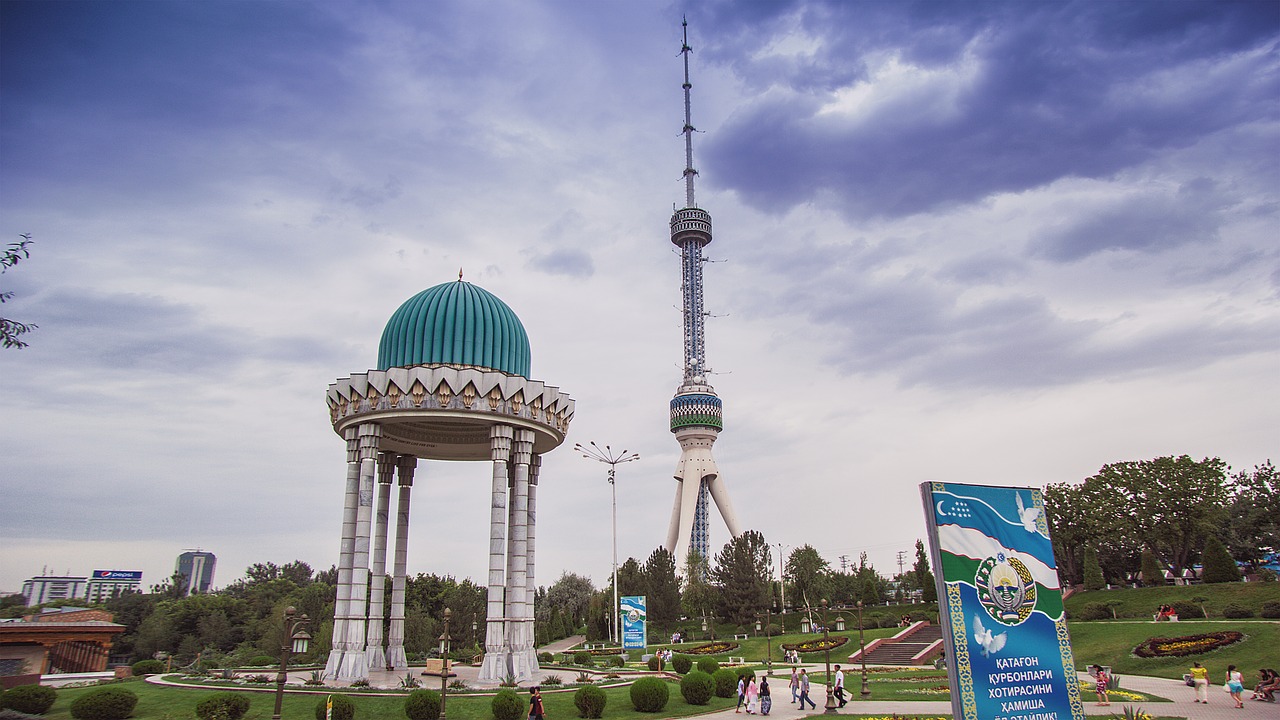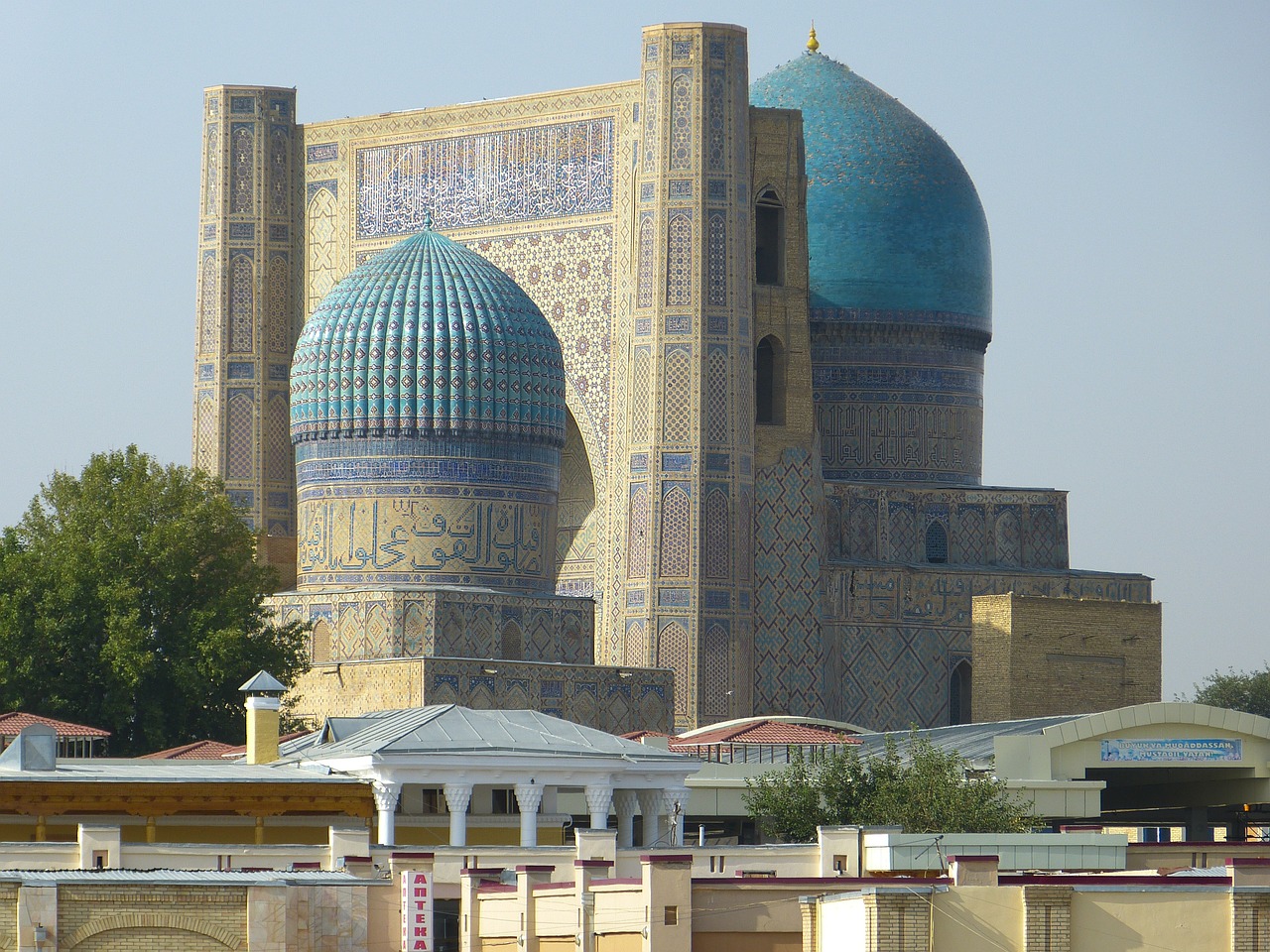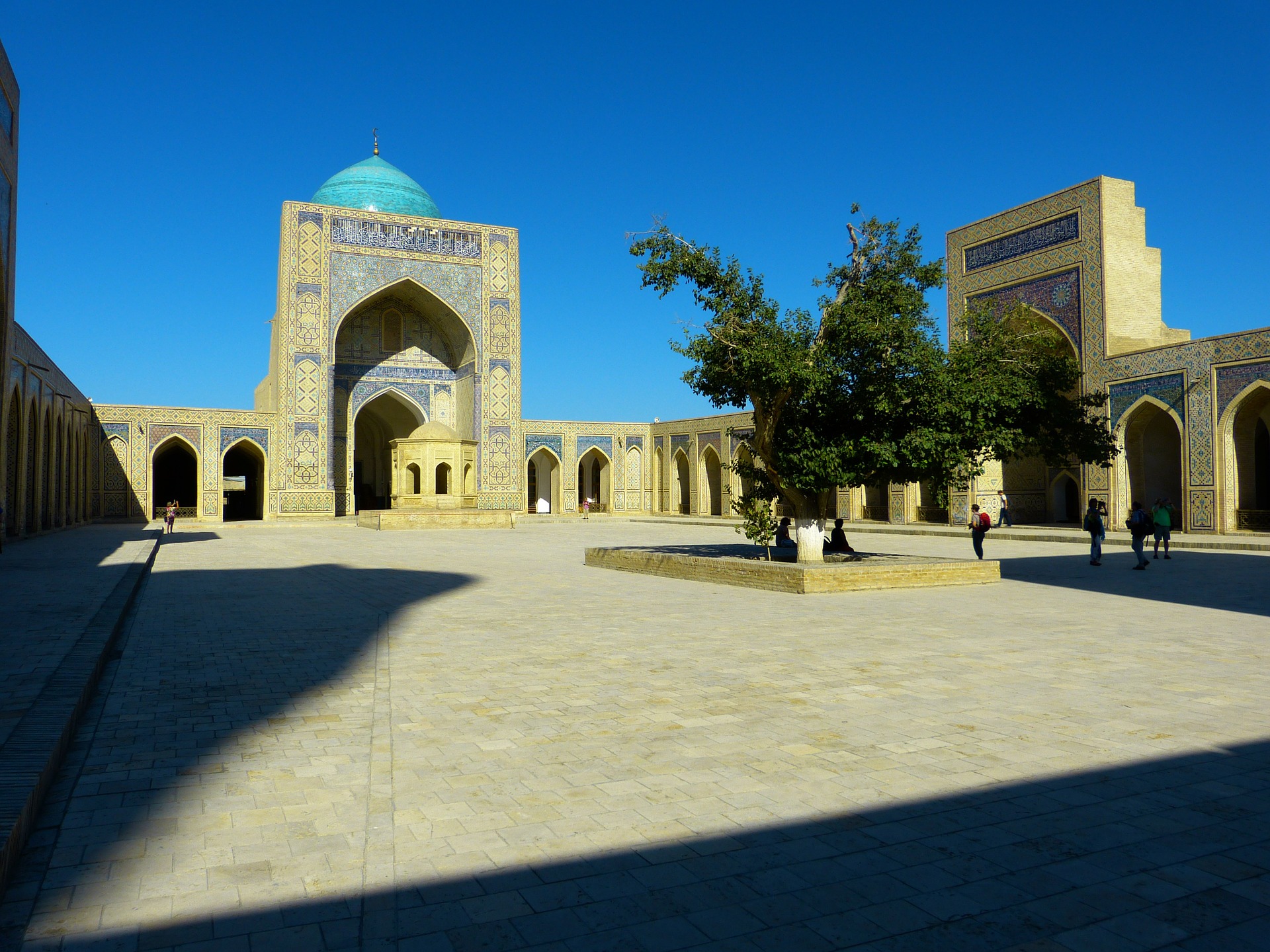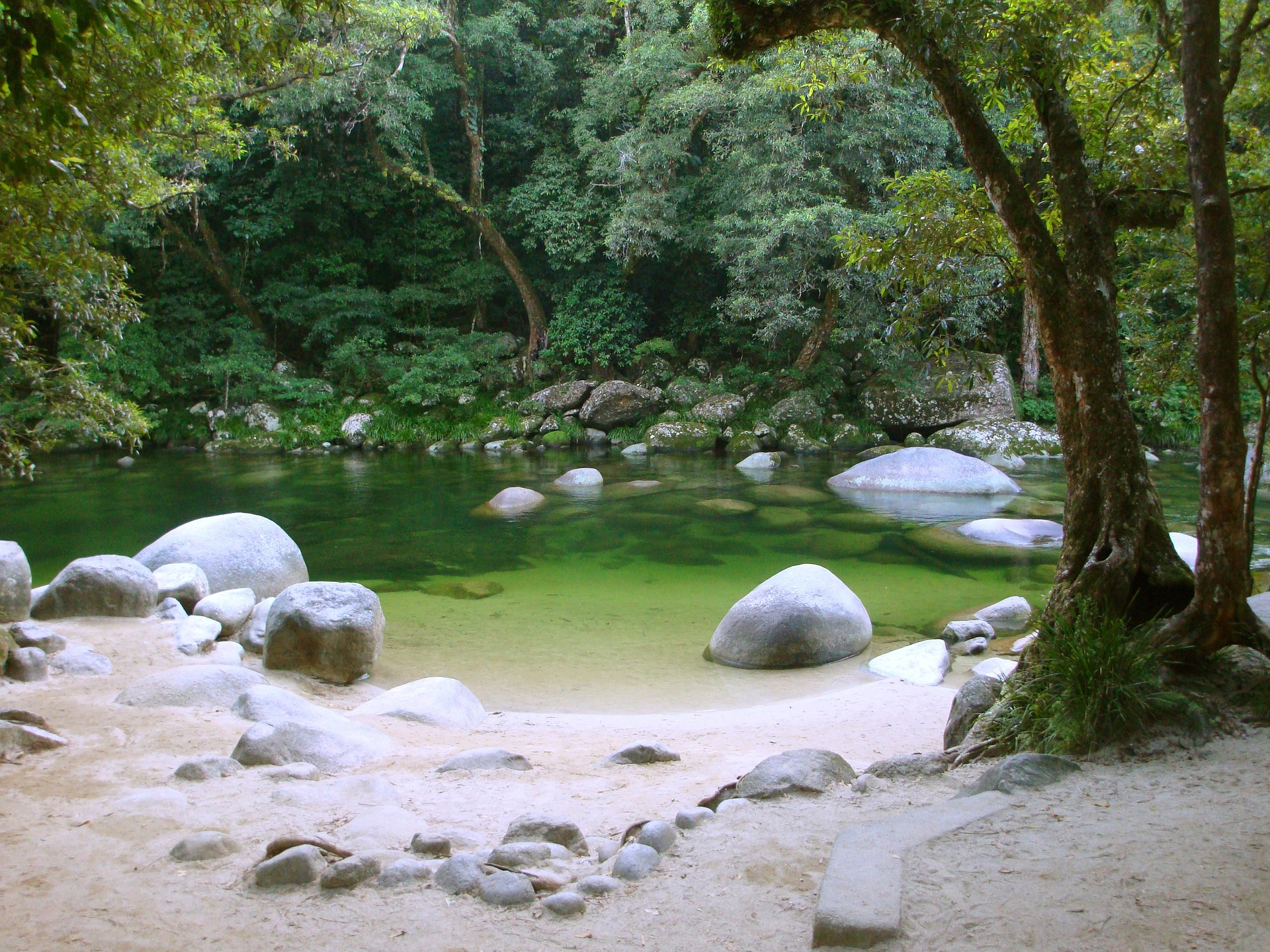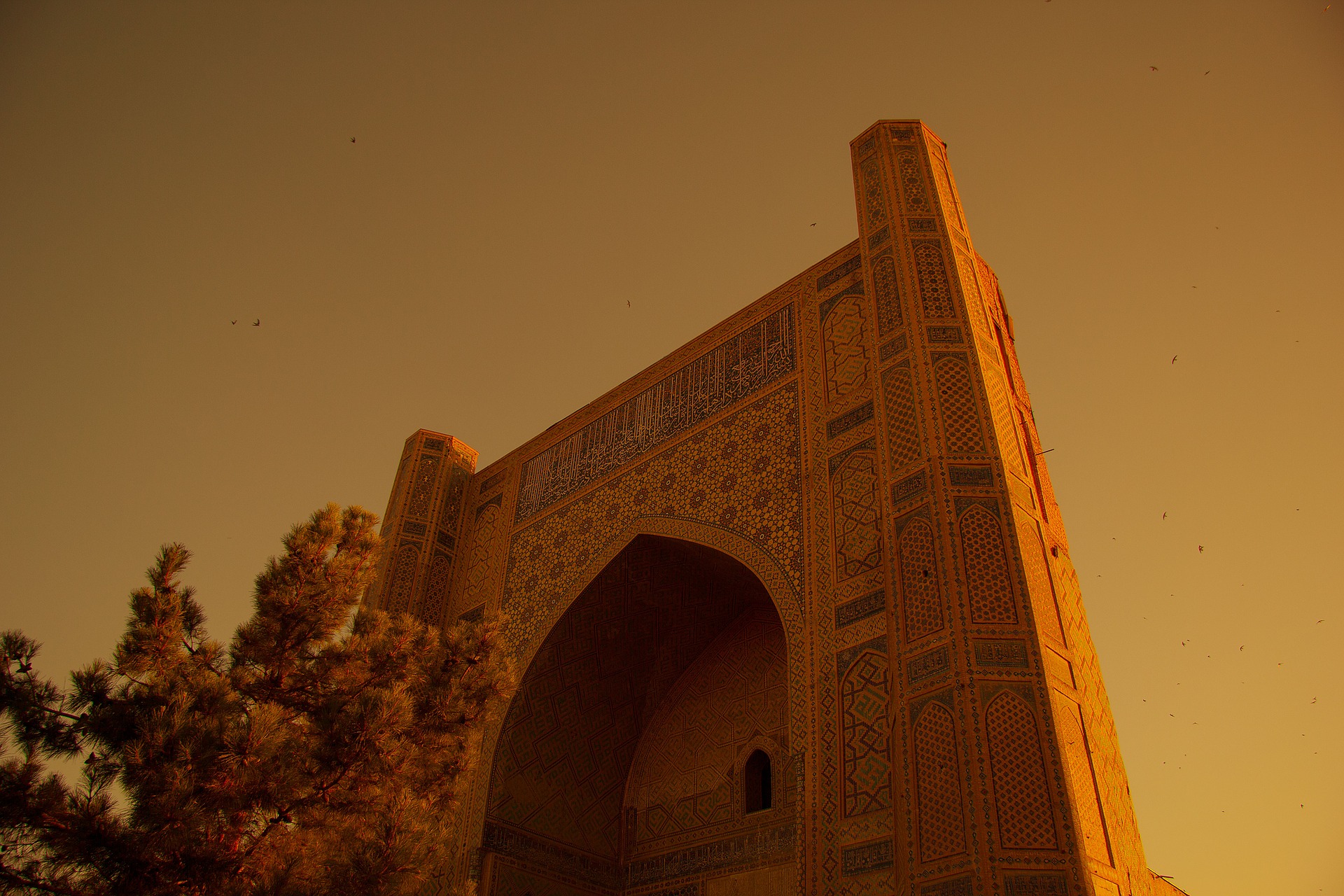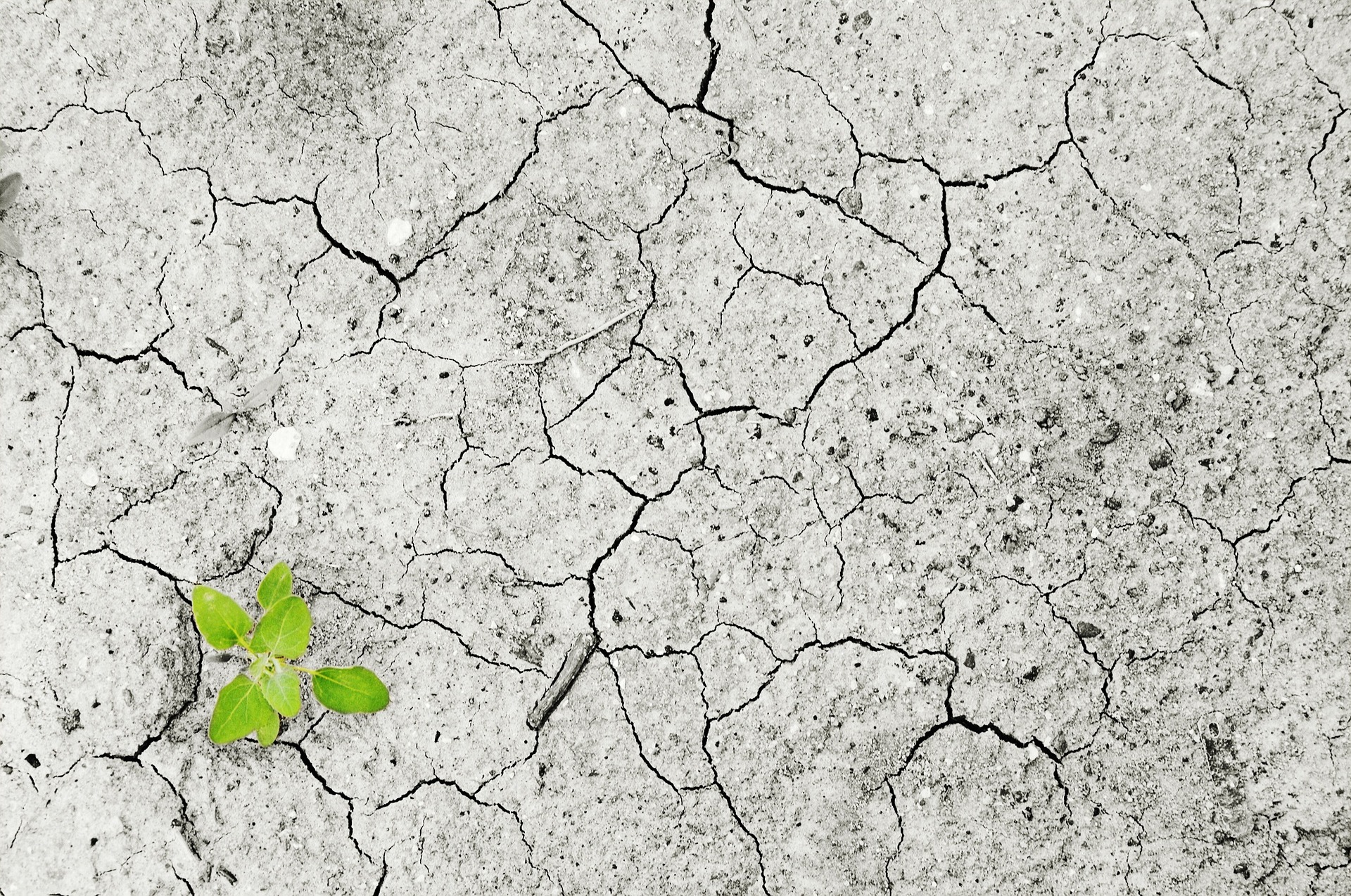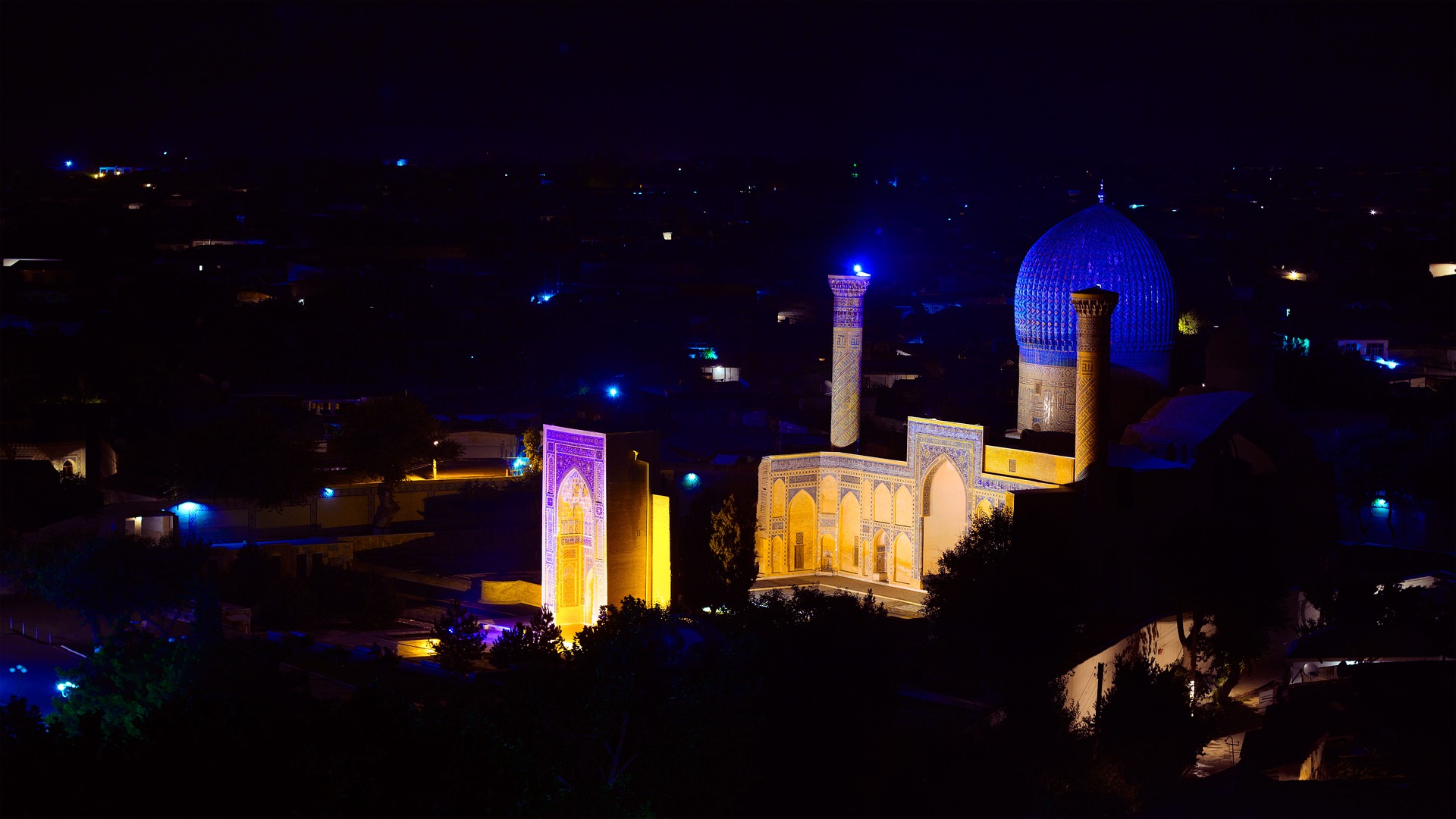No trip to Uzbekistan would be complete without a visit to the beautiful and historic city of Samarkand. One of the oldest cities in the world—it was founded more than 2,500 years ago, making it roughly the same age as ancient Rome—Samarkand flourished in the 14th and 15th centuries, when it was an important hub of trading along the Silk Road and the proud capital city of the Timurid empire. Today, Samarkand’s many breathtaking buildings and monuments are a testament to the city’s rich cultural legacy and a powerful draw for travelers in search of a taste of history. Some of Samarkand’s most amazing sights include:
-
Registan
Registan Square, or simply “the Registan,” is the dramatic heart of Samarkand. A huge public plaza with majestic buildings bordering it on three sides, the Registan has been called “the noblest public square in the world.” Historically a marketplace full of vendors and Silk Road traders, the Registan today is an oasis of peace and beauty in the center of the city. While the Registan is breathtaking at dawn, locals also recommend visiting it at night, when spotlights illuminate the whole square like something from a fairy tale.
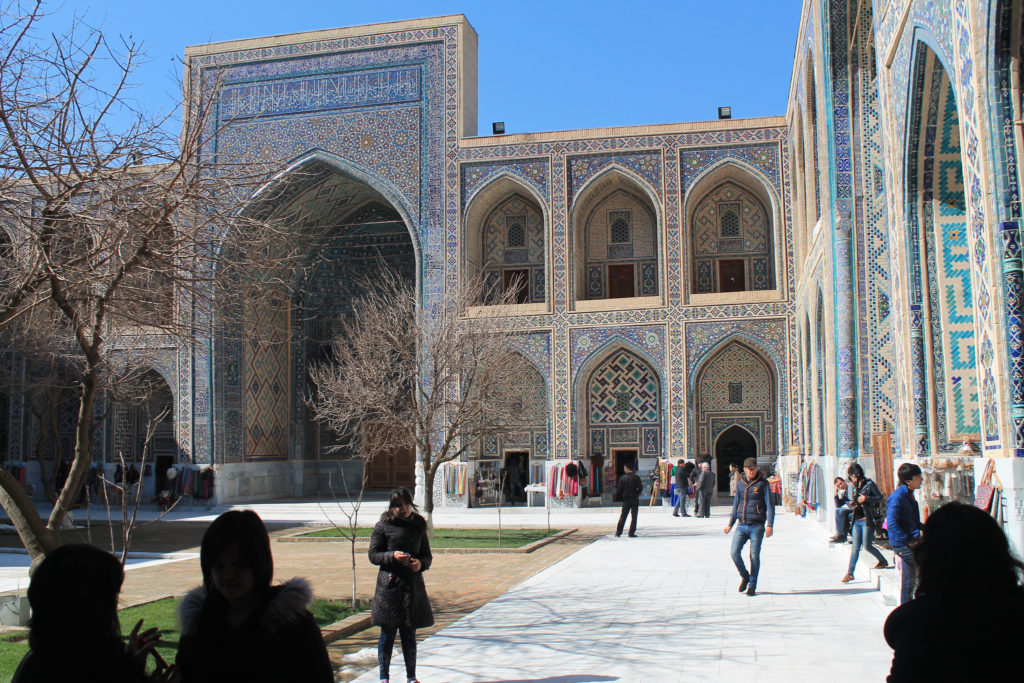
-
Ulugh Beg Madrasah
The oldest of the three buildings that border Registan Square is the Ulugh Beg Madrasah. Dating back to the early 14th century, this madrasah was once one of the finest universities in the east (madrasah is the Arabic word for any type of educational institution). As its name implies, it was built by Ulugh Beg, the grandson of the emperor Timur and one of the most important Central Asian scientists-philosophers of his time. While the exterior is stunning, you shouldn’t miss a visit to the interior of the madrasah, which is home to some beautiful gardens.
-
Sher-Dor Madrasah
The Sher-Dor Madrasah is the second building to be constructed on Registan Square. Built between 1619 and 1636 in the same style as the Ulugh Beg Madrasah, it is particularly notable for the mosaic of lions and tigers that adorns its front façade (Islam typically forbids the artistic depiction of figures, including people and animals). Indeed, the madrasah’s very name gives a clue to its most important feature: “Sher-Dor” means “decorated with tiger’s or lion’s image.”
-
Tilya-Kori Madrasah
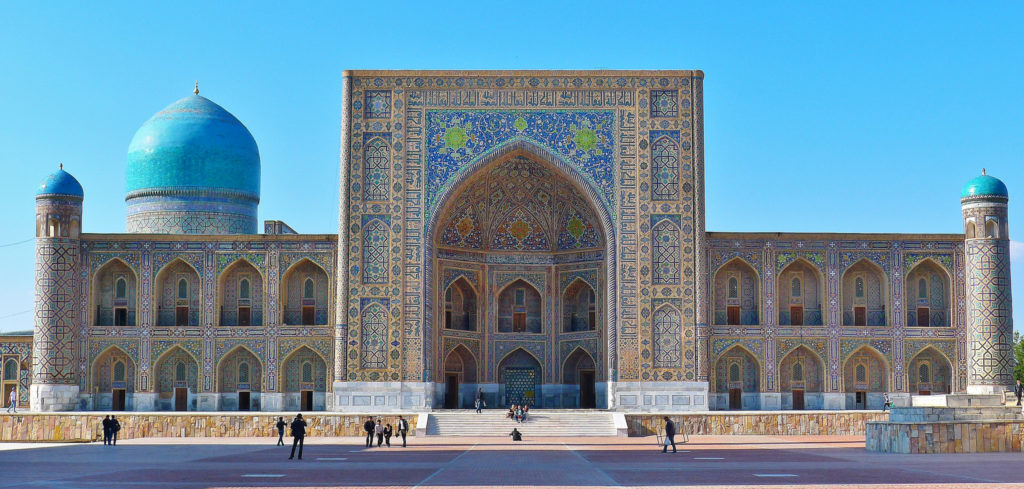
The third and final building in the Registan ensemble is the Tilya-Kori Madrasah. The central structure in the square (the Sher-Dor and Ulugh Beg Madrasahs face each other on opposite sides), the Tilya-Kori Madrasah was built just 10 years after Sher-Dor. Today, it is home to a museum, as well as a beautiful mosque with a tranquil courtyard.
-
Shah-i-Zinda Necropolis
If Registan Square’s most breathtaking feature is its sheer expansiveness, the Shah-i-Zinda’s is the intricate, maze-like quality of its blue-tiled, twisting and turning streets. An extravagant tomb or mausoleum for the Timurids and later Uzbek rulers and nobles, the Shah-i-Zinda complex consists of row after row of shining blue tombs nestled along medieval walkways. The compound’s elaborate and somewhat haphazard geography reflects the fact that construction work was more or less continuous for centuries on end, with new buildings (and graves) being added to the complex whenever and wherever they were needed.
-
Bibi-Khanym Mosque
Once one of the largest and most important mosques in the world, the Bibi-Khanym mosque was, to a certain extent, a victim of its own ambitions. Built either by the emperor Timur or by his wife, Bibi-Khanym, in honor of his return from a trip to India—legends vary—the mosque pushed construction techniques of the time to the absolute limit: the structure was not strong enough or designed well enough to support the weight of the 41-meter high cupola and the 38-meter high entrance portal, and the dome began to crumble even before construction was complete. For many years, the structure lay more or less in ruins until a comprehensive restoration program was begun in the 1970s.
-
Gur-e-Amir Mausoleum
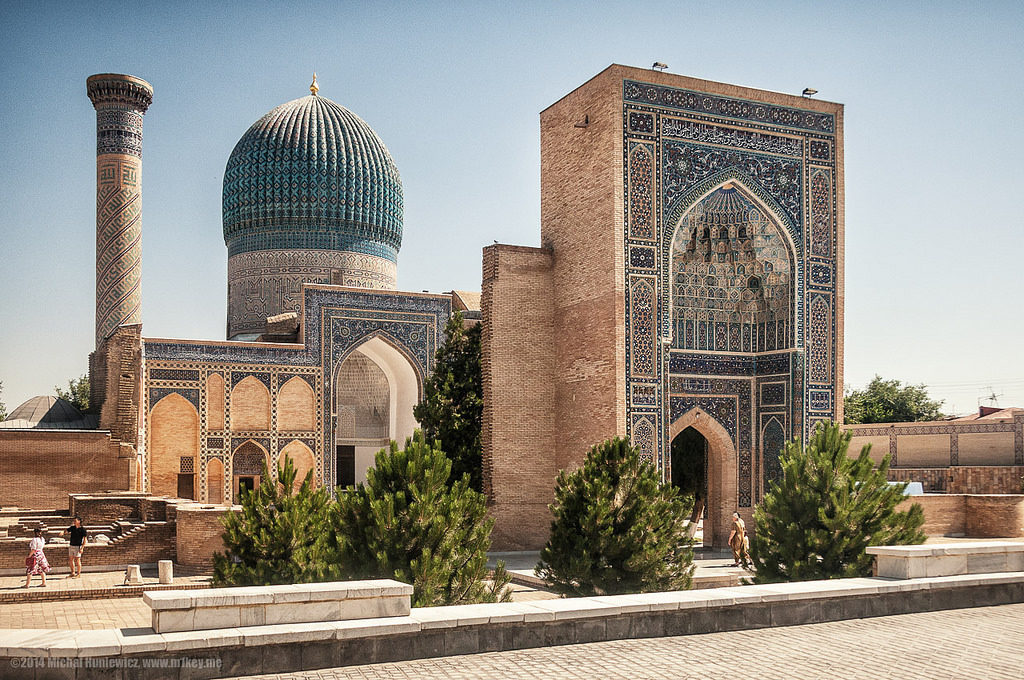
It should come as no surprise that the tomb of Timur, Samarkand’s legendary ruler, is one of the city’s most impressive sights. Located only 500 meters away from the Registan, the Gur-e-Amir mausoleum (Gur-e-Amir is the Persian term for “Tomb of the King”) has a beautiful portal and exquisite fluted azure dome. Like many of Samarkand’s sights, the Gur-e-Amir mausoleum is wonderful to visit at night, when spotlights light up the dome and the intricate tilework.
-
Ulugh Beg Observatory
While Timur’s grandson, Ulugh Beg, was a man of many abilities, he achieved his greatest accomplishments in the field of astronomy, due in large part to the amazing observatory that bears his name. While much of the structure was destroyed over the years, visitors can still see Ulugh Beg’s grand sextant: an instrument used for measuring the position of stars that took the form of a curved stone arch more than 40 meters high. Even though little remains of the observatory itself, the adjacent museum is an excellent way for visitors to learn more about the life and legacy of this exceptional scholar.
